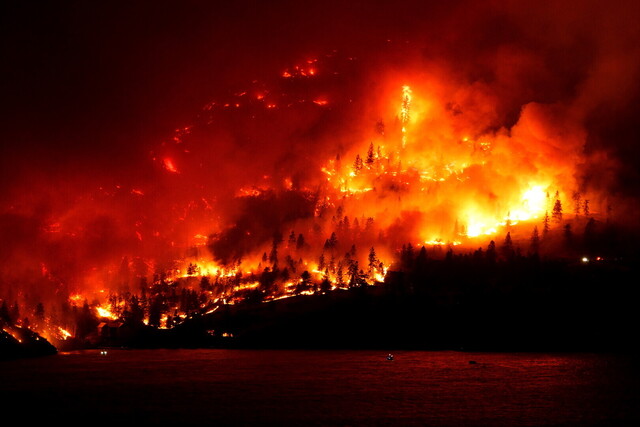B.C.’s Wildfires: A New Breed of Disaster
As the summer heat intensifies, so does the threat of wildfires in British Columbia. However, experts warn that these fires are not the same as those seen in past decades. They are a new breed of disaster, fueled by climate change and human activity.
According to the BC Wildfire Service, there have been over 1,000 wildfires in the province this year alone. This is a significant increase compared to the average of 600 fires per year in the past decade. These fires have already burned over 300,000 hectares of land, and it’s only the beginning of July.
What makes these wildfires different from those in the past? For one, they are burning hotter and faster. This is due to the changing climate, which has led to drier and hotter conditions, creating the perfect environment for fires to spread quickly. In fact, the average temperature in B.C. has increased by 1.4 degrees Celsius since 1950, making it more susceptible to wildfires.
But it’s not just the climate that is to blame. Human activity has also played a significant role in the increase of wildfires. The BC Wildfire Service reports that 40% of wildfires in the province are caused by humans, whether it be through carelessness or intentional acts. This includes activities such as campfires, discarded cigarettes, and even machinery use.
Another factor that sets these wildfires apart is their unpredictability. In the past, wildfires would typically occur in the summer months, but now they can happen at any time of the year. This makes it challenging for firefighters to prepare and respond to these disasters effectively.
The impact of these wildfires goes beyond the destruction of land and property. They also have a significant impact on the environment, wildlife, and human health. The smoke from these fires can travel hundreds of kilometers, affecting air quality and posing a health risk to those with respiratory issues.
In response to these new challenges, the BC Wildfire Service has implemented new strategies and technologies to combat wildfires. This includes the use of drones, satellite imagery, and predictive modeling to detect and monitor fires. They have also increased their resources, including personnel and equipment, to respond to fires more efficiently.
It’s clear that B.C.’s wildfires are a different beast than those seen in the past decades. They are more frequent, more intense, and more challenging to control. As we continue to see the effects of climate change and human activity, it’s crucial that we take action to prevent and mitigate these disasters. Whether it be through responsible behavior or implementing new strategies, we must work together to protect our province from these destructive wildfires.




